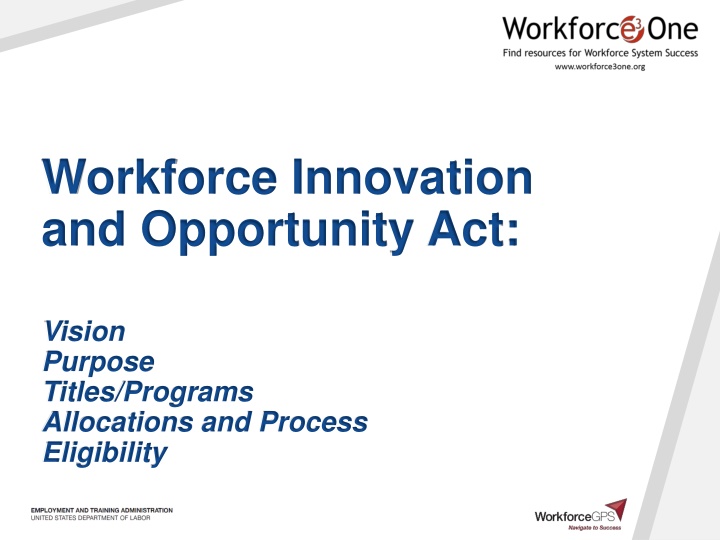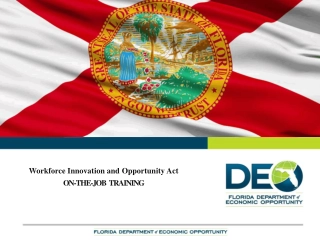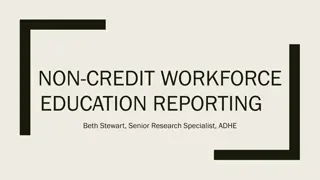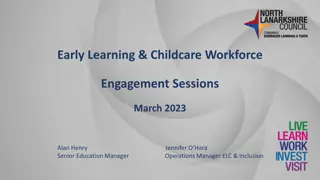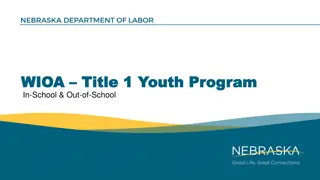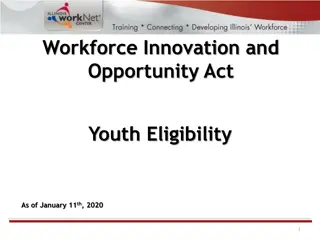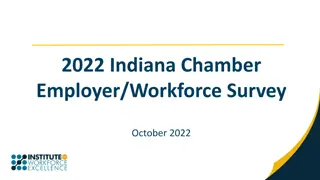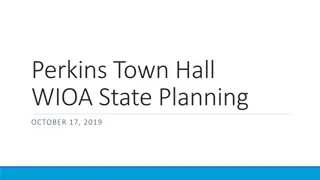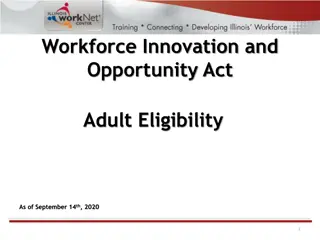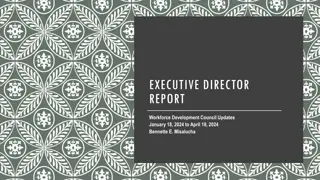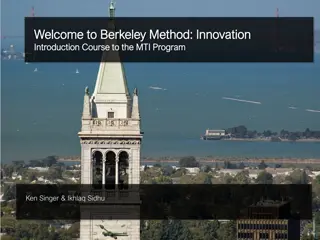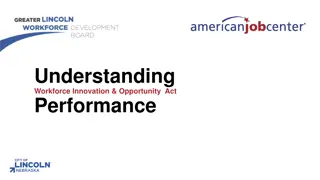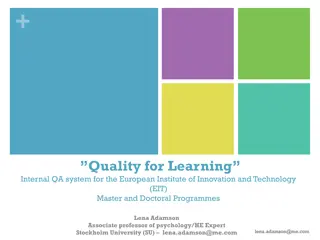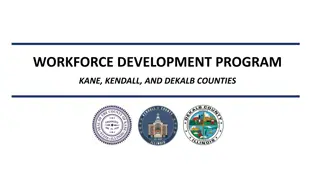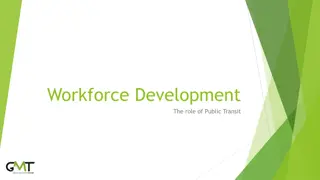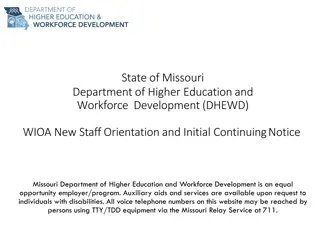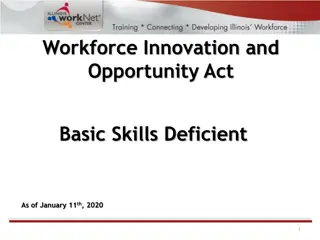Overview of Workforce Innovation and Opportunity Act Programs
The Workforce Innovation and Opportunity Act (WIOA) aims to create an integrated, job-driven workforce system that connects diverse talents with businesses. WIOA programs provide resources for education and training to prepare individuals for work, tailored to meet current employer needs. Title I, II, and III programs offer federal funding for youth, adults, and dislocated workers, focusing on building essential skills for employment. Eligibility criteria vary for adult, dislocated worker, and youth services under WIOA. The allocation process ensures timely availability of funds for program implementation.
Download Presentation

Please find below an Image/Link to download the presentation.
The content on the website is provided AS IS for your information and personal use only. It may not be sold, licensed, or shared on other websites without obtaining consent from the author.If you encounter any issues during the download, it is possible that the publisher has removed the file from their server.
You are allowed to download the files provided on this website for personal or commercial use, subject to the condition that they are used lawfully. All files are the property of their respective owners.
The content on the website is provided AS IS for your information and personal use only. It may not be sold, licensed, or shared on other websites without obtaining consent from the author.
E N D
Presentation Transcript
Workforce Innovation and Opportunity Act: Vision Purpose Titles/Programs Allocations and Process Eligibility
Vision To achieve and maintain an integrated, job-driven workforce system that links our diverse, talented workforce to our nation s businesses and improves the quality of life for our citizens. Based on three key pillars of our system: One-Stop career centers provide first-rate customer service to jobseekers, workers, and businesses. WIOA The demands of businesses and workers drive workforce solutions. The workforce system supports strong regional economies.
What is the purpose of WIOA programs? Under WIOA, workforce development programs provide resources for education and training services that: Prepare individuals for work to meet current employer needs; through, Assessments, career coaching, occupational skill training, classroom training, supportive services, and on-the-job training; and, Workforce activities customized to meet the needs of individuals customers both business customers and Jobseekers 3
WIOA Titles Title I Programs Title I is the primary source of federal workforce development funding to prepare youth, adults, and dislocated workers for employment and help build necessary skills to continue and advance in employment
WIOA Titles Title II & Title III Programs Title II is the main source of federal adult education and literacy funding, including English language services. Title III funds the Wagner-Peyser Employment Services program, which provides labor exchange services that match employers with qualified job seekers.
Eligibility for WIOA programs For Adult services: Be 18 years old or older; Be a U.S. Citizen or Registered Alien; Meet Selective Service registration requirements (if applicable). For DW services: Same as above plus needs to be unemployed (several criteria listed) For Youth services: Out of school (75%) or In School youth (25%) Reference TEGL 9-21 6
Overview of Allotment Process Congress passes a budget appropriating funds The Act makes all (100%) of the Youth program funds available for obligation on April 1; A portion (18%) of the WIOA Adult and Dislocated Worker (20%) funds are available for obligation on July 1, and the balance (82%/80%) on October 1; States provide funds to Local Workforce Areas based on Within-State formulas adopted by State and consistent with WIOA 8
WIOA Youth and Adult Sub-State Allocations: Must be allocated to local areas per Formula or Discretionary rules States must choose one of these allocation methods Formula Allocation: Must be equally split Discretionary Allocation: Ratio Split 70% 30% May be split at any ratio using both factors but no more than 30% of total funding Excess Disadvantaged Adult/Youth + Must be split in equal parts and must total no less than 70% of total funding ASU Unemployment Minimum percentage (stop loss) applies Excess Unemployment Excess Youth/Poverty Disadvantaged Adult/Youth Excess ASU Unemployment Minimum percentage (stop loss) may apply Minimum percentage (stop loss) applies
WIOA Dislocated Worker Sub-State Allocations: Must be allocated to local areas per Formula created by the Governor States must use the following six data factors using the most appropriate data available Plant closing and mass layoff data Farmer-rancher economic hardship data Long-term unemployment data Insured unemployment data Declining industries data Unemployment concentrations Minimum percentage (stop loss) applies Maximum percentage (stop gain) not required but may apply Weighting a factor zero is not permitted unless a rational is presented in an approved State Plan
Funding for WIOA programs PY22 Adult $2,163,640 DW $1,596,891 Youth $2,281,555 W-P (ES) $4,975,831 Under WIOA rules, the state can reserve up to 25% of the DW budget for rapid response The State can set aside 15% of the Adult, DW, and Youth allocations for a Governors reserve to be used for statewide activities ; Wagner Peyser allocation is subject to a 10% set aside 11
Eligible Training Provider List WIOA requires that only approved training providers can be paid with WIOA program funds Registered Apprenticship programs are automatically listed Providers are required to provide MDLI program data like type of training, outcomes, SSN, etc. https://montanaworks.gov/training 12
